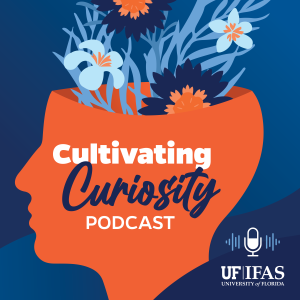A Landscape Language
Although it may sound strange, we speak an inherent language with our environment. Humans evolved in our environment, inseparable from everything around us. As such, we once learned and understood different patterns, structures, formations, and functions of our environment – almost intrinsically. Ann Sprin, a landscape architect wrote a book titled The Language of the Landscape. She starts the book by stating, “The language of landscape is our native language. Landscape was the original dwelling; humans evolved among plants and animals, under the sky, upon the earth, near water…The language of the landscape can be spoken, written, read, and imagined. Speaking and reading landscape are by-products of living – of moving, mating, eating – strategies of survival – creating a refuge, providing prospect, growing food.”
Ethnobotany & Ethnoecology
Culturally, plants and people overlap. In some parts of the world, there is a strong connection between culture and plants (or our environment), while in others it’s weak. Recently, Alyssa Vinson from UF/IFAS Extension Manatee County and I interviewed Dr. Rick Stepp as part of our Cultivating Curiosity podcast. Dr. Stepp, a professor at the University of Florida’s Department of Anthropology, studies ethnobotany and ethnoecology. Ethnobotany is the study of understanding the interactions between people and plants. From a slightly broader perspective, yet similar, ethnoecology is the study of people and our environment.
During our conversations with Dr. Stepp, he discussed a unique discovery relating to human languages and environments. In geographic regions where we can still see a diverse mix of cultures and languages, Dr Stepp’s research discovered these cultural and language differences aligned with different environments and ecosystems. Although this data does not mean, “ecosystem diversity equates to a diversity of cultures and languages,” it does entice researchers to look further into the topic. Nonetheless, researchers hypothesize a stronger connection between our environment and the evolution of religions, cultures, and languages than previously thought.
Florida’s Ethnobotany
On a global scale, we see these strong environmental/cultural relationships. Locally, we have strong connections between people and plants that tell a great story. Of course, all plants play a role in our society and relate to ethnobotany. For example, pine for homes, plants for gardens, and corn for food production. Some plants also represent culture. Consider citrus trees. Although non-native to Florida, our citrus industry has cemented itself in Florida’s culture since its introduction by the Spanish. But as we look around our gardens and landscapes – it is easy to overlook the cultural significance of many of our plants. While walking through a landscape you may see camellias. Despite their beauty – all traditional teas come from camellias and many cultural practices relate to growing, preparing, and drinking teas. Other unique examples to the southeast and Florida include coontie palms, yaupon hollies, and cabbage palms.
Many indigenous groups boiled and ground up coontie roots to make a flour-like substance to make bread. However, we do not recommend that practice since coontie palms are highly toxic. Throughout the southeast United States, indigenous tribes would make ceremonial drinks called “Black Drink.” Black drink is a tea made by our native Yaupon Holly. Black drink, a highly caffeinated tea, remained popular throughout the southeast and into the 20th century before fading in popularity. It is now regrowing in popularity, and we can find Yaupon Tea at local grocery stores. Many groups in the south constructed Chickee Huts, utilizing cabbage palm fronds as that thatch roof. Later they were used to make “swamp cabbage,” a traditional Florida-cracker food. However, it is now difficult to make Swamp Cabbage because of the protections put in place of cabbage palms.
Reconnecting a Lost Language
No matter where we look in our environment, we are intrinsically connected to the landscape. Our religions, languages, cultures, and the mere act of survival, depend upon the linkages between us and our environment. Researchers believe the Industrial Revolution led to the separation of the natural language. Is this a bad thing? Not entirely. Modern technologies may help rebuild the lost language or develop a newer landscape language. But, as stated by Ann Spirn, the consequences associated with misunderstanding the language could be dire. Therefore, we should be thoughtful and willing to listen.
How to Reach Us!
If you have any questions about planting, selecting, and maintaining your garden, reach out to our Master Gardener Volunteer Help Desk at Nassau County’s extension office for more tips. For all your questions about managing your gardens and landscapes, you may reach out to the Nassau County Master Gardener Volunteers at NassauMGV@ifas.ufl.edu.
Check out EXTENSION CORD
A UF/IFAS Extension podcast for anyone interested in plants!
 More Information:
More Information:
The Good Gardener – An MGV Newsletter
UF/IFAS Extension Nassau County
UF/IFAS Extension Blogs – Taylor Clem
Social Media:
 0
0

